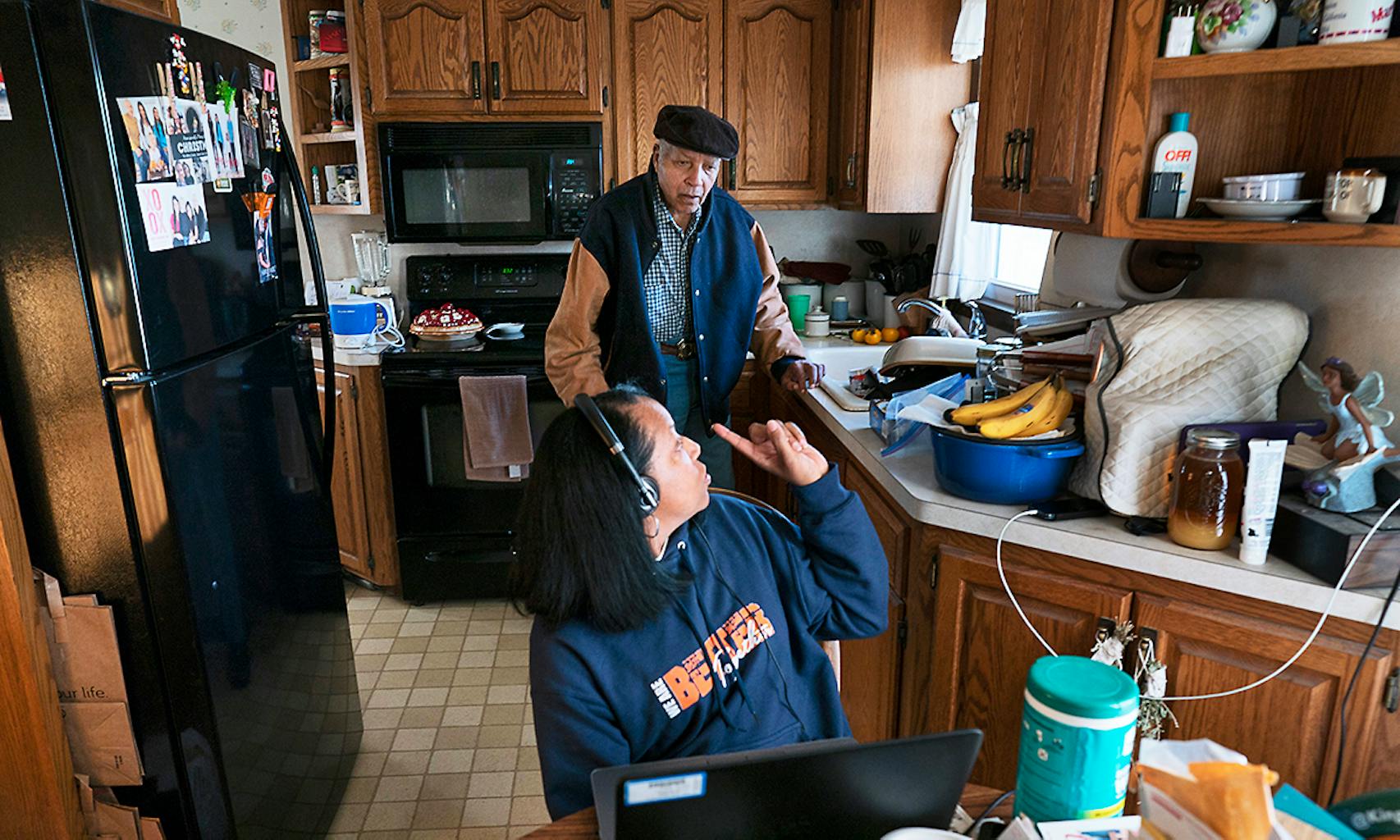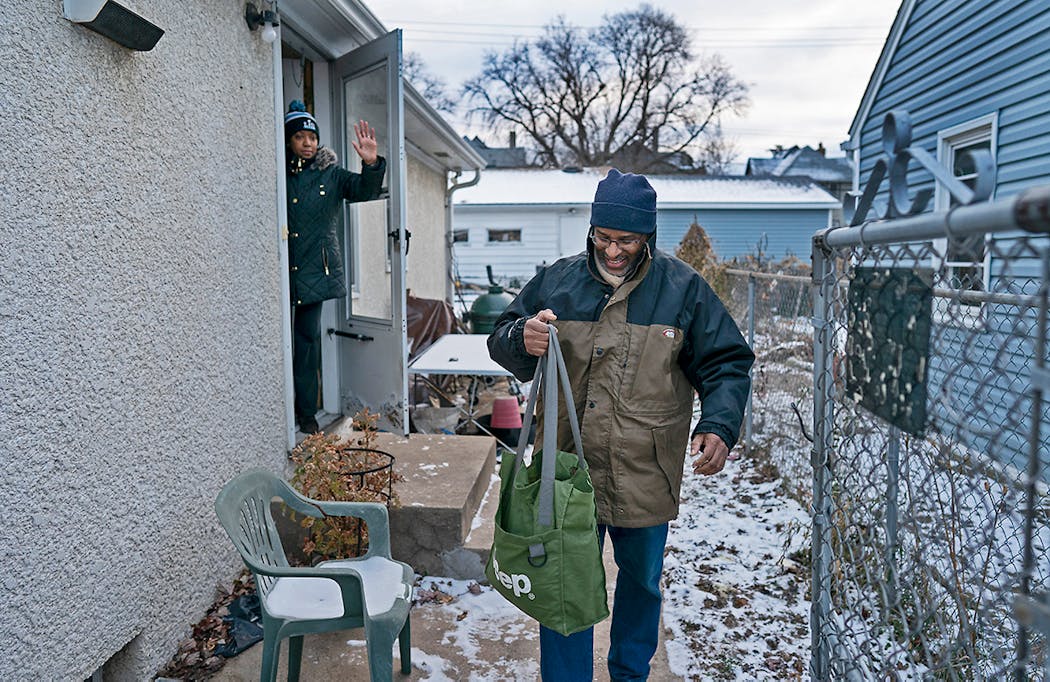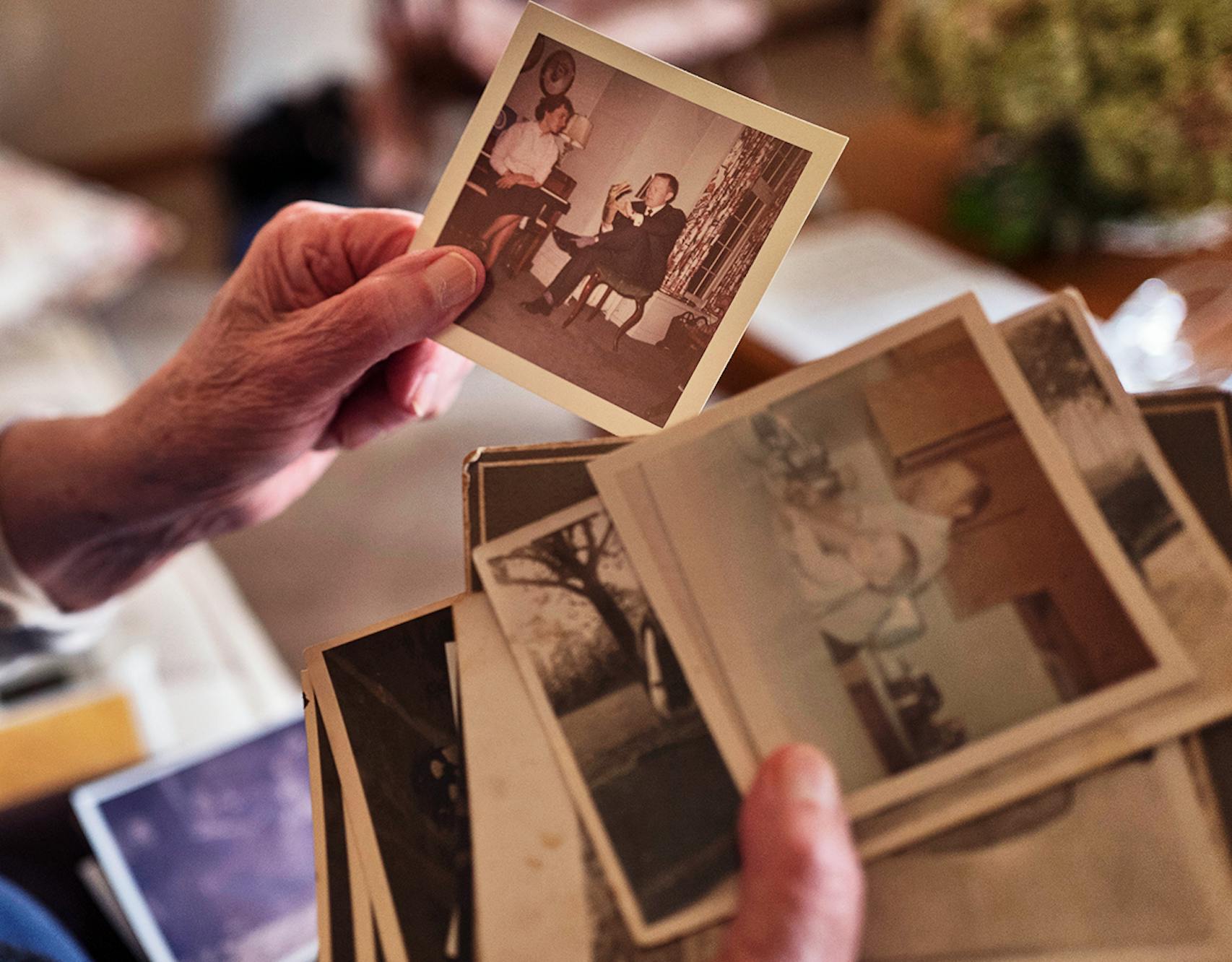It's 5 a.m. and Helen Johnson is awake, her legs aching. She listens to the radio for a while, and at daybreak turns up the heat and walks unsteadily to the living room of the house in the Minneapolis suburbs where she has lived for 52 years.
At 88, Johnson has outlived her husband, most friends and all of her siblings. In recent months, her legs have become so weak that she relies on a walker and has stopped driving. She is anxious about losing her home and independence, and of becoming a burden to her two children.
"The fear is worse than anything else," she said. "I don't want to be in assisted living or a nursing home. My God it is so expensive. My mind is good."
Finding better ways to support older adults in their homes will become a critical challenge for Minnesota and the nation in coming years, as society copes with the aging of the baby boom generation. Studies show that people stay healthier longer at home, and slots in assisted living and nursing homes, which are more expensive, could become scarce for those who want them.
Public policy, with Minnesota at the forefront, has shifted toward keeping seniors in their homes as long as possible.
But for all the talk of aging in place, the reality falls far short of the ideal. As Americans live longer, more find they need help with everything from basic housekeeping to complex health issues. The work of keeping them safe lands mostly on adult children or other family members, who themselves are juggling families and careers, sometimes from a great distance.
Johnson and her family are holding it together, for now.
Her son, Tim, who recently got married, brings groceries and takes care of mowing, shoveling snow and routine house maintenance. Daughter Linda Mertens, married with three teenage daughters, handles Johnson's increasingly complex medical needs, spending a growing amount of time taking her to appointments with specialists and dealing with insurance.
As their mother's mobility declines, her children's concern grows along with daily pressures to carve out more time to help her.
"People underestimate the complexity of the situation caregivers are dealing with, both the medical and family dynamics," said Beth Wiggins, director of caregiving and aging services for Stillwater-based Family Means, which provides a range of services for older adults and their caregivers.
Pressure on progress
Through years of bipartisan efforts, Minnesota has become a national leader in shifting the care of older adults away from more expensive institutions. In 2001, the Legislature put a moratorium on the number of new nursing home beds and in 2007 started funding grants to help people live well at home.
With the increase of these home- and community-based services, the rate of nursing home stays by Minnesotans 85 and older has dropped from 36.4 percent in 1984 — twice the national average at the time — to 12.4 percent in 2015.
But a rapidly aging population will put increasing pressure on that progress — and funding already falls short of what many need.
Minnesota now spends more than $21 million a year through the federal Older Americans Act on programs and services that help older adults stay in their homes, thus delaying or avoiding more costly institutional care. The funding pays for help with household chores, home-delivered meals, assistance from the Senior LinkAge Line, transportation and caregiver services.
"We need new models of navigation and support," said Dawn Simonson, executive director of the Metropolitan Area Agency on Aging. "It's about trying to figure it out at home. That's where we have the biggest challenges."
Kids take shifts for care
Dementia can take an especially hard toll on families as they try to keep someone in his or her home. As Chris Martin's memory continues to decline, his four adult children have stepped in to provide round-the-clock care.
The siblings already have cared for their mother, Liz, who had Parkinson's disease and died six years ago.
Kelly Martin and her twin sister, Karen, took on much of the front-line duties, holding to their promise to keep her out of a nursing home. Their 86-year-old father, less of a force in their lives, didn't get the same promise. But the siblings are determined to do whatever they can for as long as they can.
"It's challenging," Kelly Martin said. "It's up and down. We're able to do it for now."
Martin, a native of Oklahoma, moved to Minneapolis as a young man. He bought his house in 1961 along with a wave of other black families in a south Minneapolis neighborhood now designated as a historic district.
Known to his children as "Pops," Martin's decline emerged slowly. He left keys in the door, came home late from a simple errand, forgot his wallet. The day he got lost driving home from a job, they took his keys away.
For the past year, the siblings have taken regular daytime and overnight shifts, communicating mostly by text because they're rarely in the same place all at once. The "changing of the guard" brings a swirl of activity — of people and dogs, personal belongings, even sheets as they move in and out of the bedroom near their father.
Tony, the oldest, brings an electric fry pan for his weekend shifts, when he often takes his dad for drives hoping to spark good memories. Karen and Kelly can work from their father's home.
But all are constantly on high alert. Martin's humming and wandering sometimes interrupts Karen's work phone calls. At night, sleep can be elusive as their father stirs.
"He might think it's 6 a.m., but he's only been in bed for two or three hours," said Craig Martin, the second oldest, who moved from Arizona to help with family caregiving.
The address of the home is strung above a window in the den, facing their father's favorite chair to remind him where he is.
A measure of respite comes twice a week when their father goes to the Mount Olivet adult day program in Minneapolis.
Dorothea Harris, a clinical social worker with Volunteers of America, has worked with the Martin family. She said getting support is essential for caregivers, who too often feel duty-bound to go it alone.
"Families don't always know how to connect to services that they need," said Harris, who leads the state's only caregiver and dementia program tailored to specific racial and cultural communities.
Few housing options
Almost two-thirds of those 65 and older rely exclusively on family members or friends for their care, especially as they try to remain in their homes. This unpaid work saves taxpayers more than $470 billion a year nationally and $8 billion in Minnesota — which exceeds the amount Medicaid pays for nursing homes and other long-term care services.
Issues are compounded because tighter immigration laws and low wages have restricted the pool of paid workers in caregiving roles.
Figuring out how to support these families will be critical as more boomers find themselves struggling to manage a home on their own. A quarter of Minnesotans will be 65 or older by 2030.
Seventy percent of older Americans don't qualify for government or charitable programs yet can't afford many retirement communities or round-the-clock care. And if they haven't downsized in their 60s, they are likely to stay in their homes until age 85, when disabilities tend to increase, U.S. Census data show.
Part of the problem in Minnesota is a lack a diversity of housing options for seniors, according to a report this summer from the Governor's Task Force on Housing, a blue-ribbon panel of experts. Without affordable — or appealing — options in their neighborhoods, many older adults stay in homes too big for them to handle for too long.
The task force also called for improved efforts to link people to services that could help them stay healthy and independent longer.
Yet many available assistance programs are underfunded. A Wilder Research report found that simple home improvements — such as installing a new water heater, grab bars or a main-floor shower — could help low-income seniors stay in their homes for another five years. Making the repairs would cost the state about $50 million a year. The current budget for the Rehabilitation Loan Program is about $9.5 million.
"Minnesota's on the cutting edge," said Rajean Moone, executive director of the Minnesota Leadership Council on Aging. "But there's really been no significant investment in aging services. We try to frame it as an opportunity, but when you look at the numbers and finances, things don't add up."
Changes that would make communities more age-friendly — adding sidewalks, allowing more senior housing, easing zoning rules for "granny flats" in backyards — face opposition in Minnesota and elsewhere because of cost and worries about housing density.
In Maine, which has the oldest population in the nation, voters rejected a ballot measure in November that would have provided disabled and older adults free full-time care in their homes to alleviate the amount of state Medicaid money going toward institutional care. The state-run program, opposed by the nursing home industry, would have been funded with a 3.8 percent income tax on those earning more than $128,400 a year.
In Minnesota, the median cost for a private nursing-home room is $122,000 a year, according to Genworth Financial. Getting full-time help from a home health aide for a year costs about $66,000.
A 2016 state report estimates that state and federal spending on long-term care services in Minnesota — not including the costs of medical care — could grow from about $1.2 billion annually to nearly $4 billion in 2040.
"Population aging is not just a short-term phenomenon to be weathered," the report from the Minnesota State Demographic Center warned. "Rather, we are beginning a shift toward an older society that will be the reality well into Minnesota's future."
Families sandwiched
Helen Johnson came to America from a small farming community in Germany when she was 23. She and her husband, Fred, were among the first to arrive in their neighborhood in 1966, when she was nine months pregnant and full of dreams.
Now, as the pain increases and walking becomes more challenging, the stress is building between her desire to stay at home and her children's concern for her safety.
"It's getting to the point where she needs to think about whether she can live alone," her daughter said. "I've looked at assisted living near my house. She doesn't want anything to do with it. I've offered to hire help. She doesn't want that either. I'm stuck."
Mertens, 52, is feeling pressed between caring for her mother and growing responsibilities in her own home. She has taken a second part-time job with health benefits after her husband got laid off. Her daughters are active in after-school activities.
Her mother understands the risks. She watched a tragedy unfold across the street when her 98-year-old friend fell and died in her home. Her friend's husband also had fallen and was found days later, after Johnson and others noticed newspapers piling up. He now lives in a nursing home.
As doctors seem unable to figure out the cause of her pain and weakness, Johnson has become increasingly defeatist about where and how she will live. The family remains at an impasse.
"I want to help her. I don't want her hurt," Mertens said. "But it's not that easy for me to drop everything and run over there. I feel guilty about it."

Lacrosse lists: 21 top players and the school that's No. 1 for boys and girls

Shop the curbs for free on 'Trash to Treasure Day' in White Bear Lake

Will 'shotgun only' zone for deer in southern Minnesota be abolished?
One killed in head-on crash in Coon Rapids





